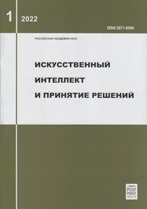|
|
Artificial Intelligence and Decision Making, 2012, Issue 3, Pages 19–25
(Mi iipr436)
|
 |
|
 |
Soft computing
Probability theory and fuzzy sets theory of L. Zadeh: the difference and the similarity
M. I. Aliev, E. A. Isayeva, I. M. Aliev
Institute of Physics Azerbaijan Academy of Sciences
Abstract:
Logical operations being made by artificial intelligence will be based on many valued logic, but better to say, on fuzzy logic. Here we the preference to use the fuzzy sets theory of Zadeh. Physical phenomena being “perceived” by artificial intelligence can be considered as events. In the probability theory any event can be divided on many elementary events which take place or not take place. But in the fuzzy sets theory of L.Zadeh these elementary events are not only 0 or 1, but may be described by also with the membership function that takes values from [0,1] interval.
Keywords:
inaccuracy, randomness, fuzziness, Kolmogorov’s axiomatic, probabilistic measure, indicator, membership function.
Citation:
M. I. Aliev, E. A. Isayeva, I. M. Aliev, “Probability theory and fuzzy sets theory of L. Zadeh: the difference and the similarity”, Artificial Intelligence and Decision Making, 2012, no. 3, 19–25
Linking options:
https://www.mathnet.ru/eng/iipr436 https://www.mathnet.ru/eng/iipr/y2012/i3/p19
|

| Statistics & downloads: |
| Abstract page: | 42 | | Full-text PDF : | 50 | | References: | 1 |
|




 Contact us:
Contact us: Terms of Use
Terms of Use
 Registration to the website
Registration to the website Logotypes
Logotypes









 Citation in format
Citation in format 